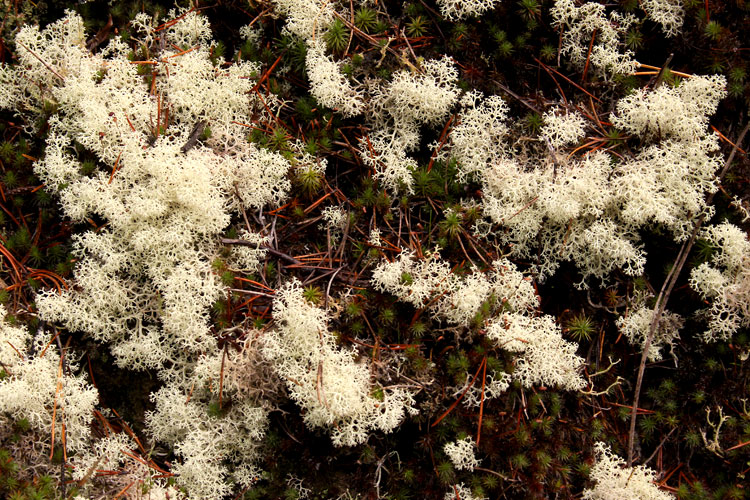 |

Reindeer Lichen (Cladina portentosa pacifica). Bogs.
A lichen, such as the Reindeer Lichen, has a special place in the diversity of life. As a symbiotic relationship between a fungus and an "alga" (a green alga, a cyanobacteria or both), it is neither. Yet, the particular association has the characteristics of a unique organism, much like species in the classical sense and lichens are treated as species by lichenologists. They have unique distributions, morphologies and biochemistries. The fungus, usually an ascomycete, appears to determine the species-type of the lichen, since the same lichen may have different algal partners in different parts of its range. There are about 30,000 species of ascomycetes and about half of them will form lichens with one or another algal partner.
The "partnership" between fungus and alga is one that favors the fungus. The body of the fungus comprises a filamentous architecture (the mycelium) that ensnares its algae and usually penetrates the algal cells with short haustoria that drain the alga of its nutrients. The lichen survives as a lichen only because the algal cells can reproduce faster than they are killed by the fungal "host". This is a delicate relationship that is extremely sensitive to external factors and lichens serve as bioindicators of changing climatic conditions and pollutants.
|

|

